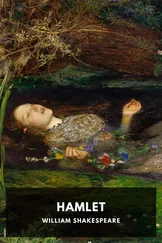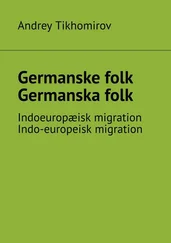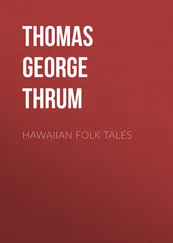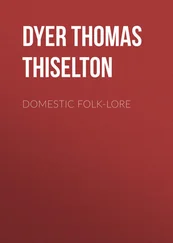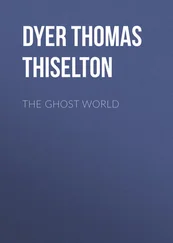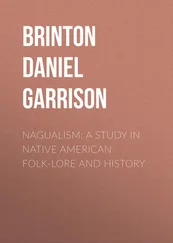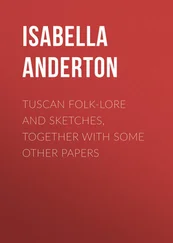Thomas Dyer - Folk-lore of Shakespeare
Здесь есть возможность читать онлайн «Thomas Dyer - Folk-lore of Shakespeare» — ознакомительный отрывок электронной книги совершенно бесплатно, а после прочтения отрывка купить полную версию. В некоторых случаях можно слушать аудио, скачать через торрент в формате fb2 и присутствует краткое содержание. Жанр: foreign_antique, foreign_prose, на английском языке. Описание произведения, (предисловие) а так же отзывы посетителей доступны на портале библиотеки ЛибКат.
- Название:Folk-lore of Shakespeare
- Автор:
- Жанр:
- Год:неизвестен
- ISBN:нет данных
- Рейтинг книги:4 / 5. Голосов: 1
-
Избранное:Добавить в избранное
- Отзывы:
-
Ваша оценка:
- 80
- 1
- 2
- 3
- 4
- 5
Folk-lore of Shakespeare: краткое содержание, описание и аннотация
Предлагаем к чтению аннотацию, описание, краткое содержание или предисловие (зависит от того, что написал сам автор книги «Folk-lore of Shakespeare»). Если вы не нашли необходимую информацию о книге — напишите в комментариях, мы постараемся отыскать её.
Folk-lore of Shakespeare — читать онлайн ознакомительный отрывок
Ниже представлен текст книги, разбитый по страницам. Система сохранения места последней прочитанной страницы, позволяет с удобством читать онлайн бесплатно книгу «Folk-lore of Shakespeare», без необходимости каждый раз заново искать на чём Вы остановились. Поставьте закладку, и сможете в любой момент перейти на страницу, на которой закончили чтение.
Интервал:
Закладка:
“Could tell what subtlest parrots mean,
That speak and think contrary clean;
What member ’tis of whom they talk,
When they cry rope , and walk, knave, walk .”
The rewards given to parrots to encourage them to speak are mentioned in “Troilus and Cressida” (v. 2): 290 290 In “Much Ado About Nothing” (i. 1), Benedick likens Beatrice to a “parrot-teacher,” from her talkative powers.
“the parrot will not do more for an almond.” Hence, a proverb for the greatest temptation that could be put before a man seems to have been “An almond for a parrot.” To “talk like a parrot” is a common proverb, a sense in which it occurs in “Othello” (ii. 3).
Peacock. This bird was as proverbially used for a proud, vain fool as the lapwing for a silly one. In this sense some would understand it in the much-disputed passage in “Hamlet” (iii. 2):
“For thou dost know, O Damon dear,
This realm dismantled was
Of Jove himself; and now reigns here
A very, very – peacock.” 291 291 This is the reading adopted by Singer.
The third and fourth folios read pajock , 292 292 “Notes to Hamlet,” Clark and Wright, 1876, pp. 179, 180.
the other editions have “paiock,” “paiocke,” or “pajocke,” and in the later quartos the word was changed to “paicock” and “pecock,” whence Pope printed peacock.
Dyce says that in Scotland the peacock is called the peajock. Some have proposed to read paddock , and in the last scene Hamlet bestows this opprobrious name upon the king. It has been also suggested to read puttock , a kite. 293 293 See Nares’s “Glossary,” vol. ii. p. 645; Singer’s “Notes,” vol. ix. p. 228.
The peacock has also been regarded as the emblem of pride and arrogance, as in “1 Henry VI.” (iii. 3): 294 294 Cf. “Troilus and Cressida,” iii. 3.
“Let frantic Talbot triumph for a while,
And, like a peacock, sweep along his tail;
We’ll pull his plumes, and take away his train.”
Pelican. There are several allusions by Shakespeare to the pelican’s piercing her own breast to feed her young. Thus, in “Hamlet” (iv. 5), Laertes says:
“To his good friends thus wide I’ll ope my arms;
And like the kind life-rendering pelican,
Repast them with my blood.”
And in “King Lear,” where the young pelicans are represented as piercing their mother’s breast to drink her blood, an illustration of filial impiety (iii. 4), the king says:
“Is it the fashion, that discarded fathers
Should have thus little mercy on their flesh?
Judicious punishment! ’Twas this flesh begot
Those pelican daughters.” 295 295 Cf. “Richard II.” i. 1.
It is a common notion that the fable here alluded to is a classical one, but this is an error. Shakespeare, says Mr. Harting, “was content to accept the story as he found it, and to apply it metaphorically as the occasion required.” Mr. Houghton, in an interesting letter to “Land and Water” 296 296 Mr. Harting, in his “Ornithology of Shakespeare,” quotes an interesting correspondence from “Land and Water” (1869), on the subject.
on this subject, remarks that the Egyptians believed in a bird feeding its young with its blood, and this bird is none other than the vulture. He goes on to say that the fable of the pelican doubtless originated in the Patristic annotations on the Scriptures. The ecclesiastical Fathers transferred the Egyptian story from the vulture to the pelican, but magnified the story a hundredfold, for the blood of the parent was not only supposed to serve as food for the young, but was also able to reanimate the dead offspring. Augustine, commenting on Psalm cii. 6 – “I am like a pelican of the wilderness” – remarks: “These birds [male pelicans] are said to kill their offspring by blows of their beaks, and then to bewail their death for the space of three days. At length, however, it is said that the mother inflicts a severe wound on herself, pouring the flowing blood over the dead young ones, which instantly brings them to life.” To the same effect write Eustathius, Isidorus, Epiphanius, and a host of other writers. 297 297 See Sir Thomas Browne’s Works, 1852, vol. ii. pp. 1-4.
According to another idea 298 298 See Brand’s “Pop. Antiq.,” 1849, vol. iii. pp. 366, 367.
pelicans are hatched dead, but the cock pelican then wounds his breast, and lets one drop of blood fall upon each, and this quickens them.
Pheasant. This bird is only once alluded to, in “Winter’s Tale” (iv. 4), where the Clown jokingly says to the Shepherd, “Advocate’s the court-word for a pheasant; say, you have none.”
Phœnix. Many allusions are made to this fabulous bird, which is said to rise again from its own ashes. Thus, in “Henry VIII.” (v. 4), Cranmer tells how
“when
The bird of wonder dies, the maiden phœnix,
Her ashes new create another heir,
As great in admiration as herself.”
Again, in “3 Henry VI.” (i. 4), the Duke of York exclaims:
“My ashes, as the phœnix, may bring forth
A bird that will revenge upon you all.”
Once more, in “1 Henry VI.” (iv. 7), Sir William Lucy, speaking of Talbot and those slain with him, predicts that
“from their ashes shall be rear’d
A phœnix that shall make all France afeard.” 299 299 Cf. “The Tempest,” iii. 3; “All’s Well that Ends Well,” i. 1; “Antony and Cleopatra,” iii. 2; “Cymbeline,” i. 6.
Sir Thomas Browne 300 300 Works, 1852, vol. i. pp. 277-284.
tells us that there is but one phœnix in the world, “which after many hundred years burns herself, and from the ashes thereof ariseth up another.” From the very earliest times there have been countless traditions respecting this wonderful bird. Thus, its longevity has been estimated from three hundred to fifteen hundred years; and among the various localities assigned as its home are Ethiopia, Arabia, Egypt, and India. In “The Phœnix and Turtle,” it is said,
“Let the bird of loudest lay
On the sole Arabian tree,
Herald sad and trumpet be.”
Pliny says of this bird, “Howbeit, I cannot tell what to make of him; and first of all, whether it be a tale or no, that there is never but one of them in the whole world, and the same not commonly seen.” Malone 301 301 See Aldis Wright’s “Notes to The Tempest,” 1875, p. 129.
quotes from Lyly’s “Euphues and his England” (p. 312, ed. Arber): “For as there is but one phœnix in the world, so is there but one tree in Arabia wherein she buyldeth;” and Florio’s “New Worlde of Wordes” (1598), “Rasin, a tree in Arabia, whereof there is but one found, and upon it the phœnix sits.”
Pigeon. As carriers, these birds have been used from a very early date, and the Castle of the Birds, at Bagdad, takes its name from the pigeon-post which the old monks of the convent established. The building has crumbled into ruins long ago by the lapse of time, but the bird messengers of Bagdad became celebrated as far westward as Greece, and were a regular commercial institution between the distant parts of Asia Minor, Arabia, and the East. 302 302 Daily Telegraph , January 31, 1880; see Southey’s “Commonplace Book,” 1849, 2d series, p. 447.
In ancient Egypt, also, the carrier breed was brought to great perfection, and, between the cities of the Nile and the Red Sea, the old traders used to send word of their caravans to each other by letters written on silk, and tied under the wings of trained doves. In “Titus Andronicus” (iv. 3) Titus, on seeing a clown enter with two pigeons, says:
Интервал:
Закладка:
Похожие книги на «Folk-lore of Shakespeare»
Представляем Вашему вниманию похожие книги на «Folk-lore of Shakespeare» списком для выбора. Мы отобрали схожую по названию и смыслу литературу в надежде предоставить читателям больше вариантов отыскать новые, интересные, ещё непрочитанные произведения.
Обсуждение, отзывы о книге «Folk-lore of Shakespeare» и просто собственные мнения читателей. Оставьте ваши комментарии, напишите, что Вы думаете о произведении, его смысле или главных героях. Укажите что конкретно понравилось, а что нет, и почему Вы так считаете.




